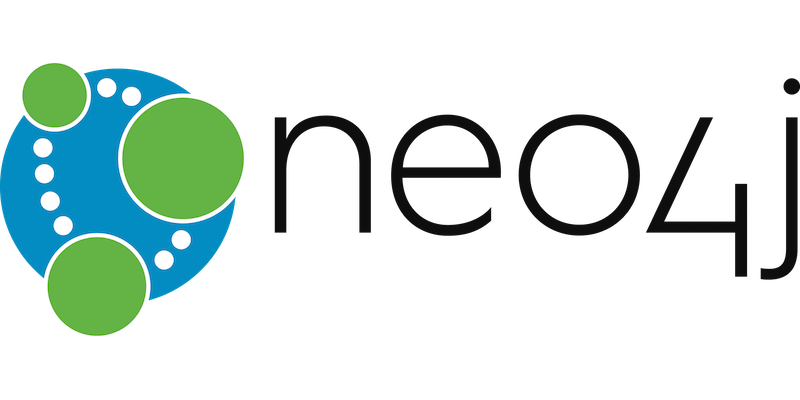Introduction
We'll explore graph-oriented databases using Neo4j as a prominent example in the present page. Graph databases are a type of NoSQL database designed to handle data with complex relationships more efficiently than traditional relational databases. This discussion will delve into the organizational structure of data within such databases and uncover the advantages derived from graph theory.Intoduction to graph theory
Graph theory, a branch of mathematics, focuses on examining the relationships between various entities. To simplify the concept of a graph, it can be defined as a collection of nodes, some of which may be connected by edges. Here are the key points in Graph theory:- Nodes: Represent entities in the system.
- Edges: Define relationships between nodes, often with properties describing the connection.
- Properties: Key-value pairs associated with nodes and edges.
- Flexibility: Graph databases are schema-less, allowing for dynamic and evolving data structures.
- Performance: Well-suited for relationship-heavy data, providing fast query performance for complex queries.
Common Graph Database Models
- Property Graph Model: Nodes and edges can have properties. Commonly used by databases like Neo4j.
(Person)-[:FRIENDS_WITH {since: 2010}]->(Person)
Neo4j
Neo4J is a graph database management system developed in Java. Its first version dates from 2000. Neo4J is undoubtedly one of the most popular GDBMS. We could also quote Orientdb, Arangodb.
Cypher Query Language
Cypher is a declarative query language designed specifically for querying graph databases. It is primarily associated with Neo4j, one of the leading graph database management systems. Cypher is designed to express patterns and relationships in the graph data model efficiently. Here are some key features and concepts of Cypher:- Pattern Matching: Cypher uses a pattern-matching syntax to describe the structure of the graph you want to query.
In this example, it's matching a pattern where aMATCH (p:Person)-[:FRIENDS_WITH]->(friend) RETURN p.name, friend.namePersonnode is connected to anotherPersonnode with aFRIENDS_WITHrelationship. - Nodes and RelationshipsNodes are represented by parentheses
( ), and relationships by square brackets[ ]. You can assign labels and properties to nodes and specify relationship types and properties. - Filtering and Conditions You can filter query results using conditions in the WHERE clause.
MATCH (p:Person) WHERE p.age > 25 RETURN p.name - Return Clause The
RETURNclause specifies what data should be returned in the result set.MATCH (p:Person)-[:FRIENDS_WITH]->(friend) RETURN p.name, friend.name - CREATE and SET Clauses: Used for creating nodes and relationships or updating properties.
CREATE (p:Person {name: 'John'}) CREATE (friend)-[:FRIENDS_WITH {since: 2010}]->(p) - MERGE Clause: Creates or matches a pattern, ensuring that it's unique in the graph.
MERGE (p:Person {name: 'Alice'}) - DELETE Clause: Removes nodes, relationships, or properties from the graph.
MATCH (p:Person) WHERE p.name = 'John' DELETE p - Aggregation Functions: Cypher supports aggregation functions like
COUNT,SUM,AVG, etc., for summarizing data.MATCH (p:Person)-[:FRIENDS_WITH]->() RETURN p.name, COUNT(*) AS friendsCount - ORDER BY and LIMIT: Used for sorting and limiting the result set.
MATCH (p:Person) RETURN p.name ORDER BY p.age DESC LIMIT 5
Example:
- Social Networks: Nodes represent individuals, and edges represent connections or friendships between them. Graph theory can help analyze the structure of social networks and identify influential individuals.
- Transportation Networks: Nodes can represent cities or locations, and edges represent roads, railways, or flight routes connecting them. Graph theory assists in optimizing transportation routes and understanding network connectivity.
- Web Pages and Hyperlinks: Web pages can be represented as nodes, and hyperlinks between pages as edges. Graph theory is applied to analyze the structure of the World Wide Web, identify important pages, and improve search algorithms.
- Recommendation Systems: Nodes can represent users, and edges represent preferences or interactions between them. Graph theory helps build recommendation systems by identifying patterns in user preferences and suggesting relevant items.
- Biological Networks: Nodes may represent proteins, genes, or other biological entities, and edges represent interactions or relationships between them. Graph theory is used in bioinformatics to study biological networks.
- Circuit Design: Components of an electronic circuit can be represented as nodes, and connections between components as edges. Graph theory aids in designing and analyzing electronic circuits.
- Epidemiology: Nodes can represent individuals, and edges represent the potential for disease transmission. Graph theory is applied to model and analyze the spread of diseases in populations.
- Knowledge Graphs: Nodes represent concepts, and edges represent relationships between concepts. Graph theory is used to build knowledge graphs, facilitating semantic understanding and information retrieval.
References
Some other interesting things to know:
- Visit my website on For Data, Big Data, Data-modeling, Datawarehouse, SQL, cloud-compute.
- Visit my website on Data engineering

